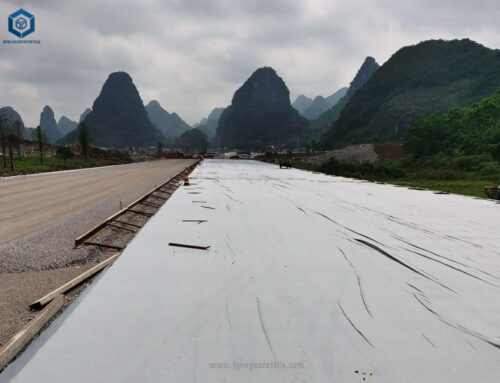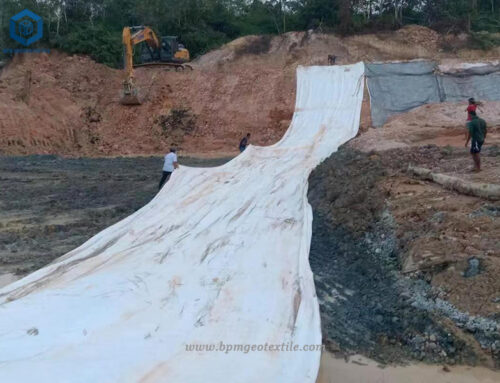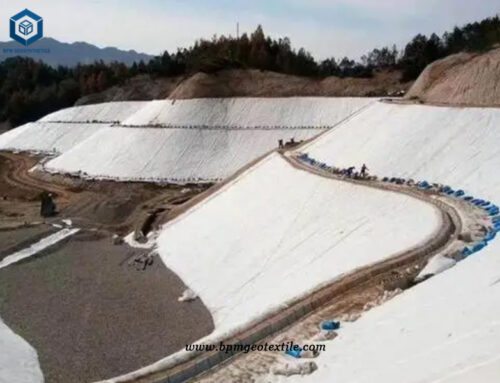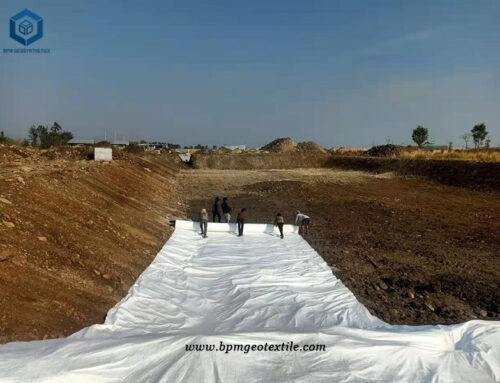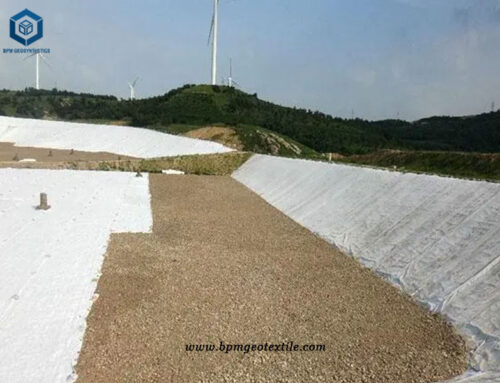PP staple fiber non-woven geo fabric materials refers to a type of geotextiles made from polypropylene (PP) staple fibers. Geo fabricid idael in various civil engineering and environmental applications, primarily for soil stabilization, filtration, drainage, and separation purposes.
Non-woven geo fabric is manufactured by mechanically bonding or interlocking fibers together, rather than weaving or knitting them. In the case of PP staple fiber needle punched geotextile, short polypropylene fibers are randomly laid and then entangled or bonded together using heat, pressure, or chemical processes. This creates a durable and porous fabric with specific characteristics suitable for geotechnical applications.
PP staple fiber non-woven geo fabric materials are widely used in landfill engineering to provide various functions and improve the overall performance of the landfill system. Here are some common applications of PP staple fiber non-woven geotextiles in landfills:
1. Separation. Geofabric can separate different layers of soil or geosynthetic materials within the landfill. They prevent the mixing of clay or other fine particles with coarser materials, such as drainage layers or geomembranes. This separation maintains the integrity and functionality of each layer.
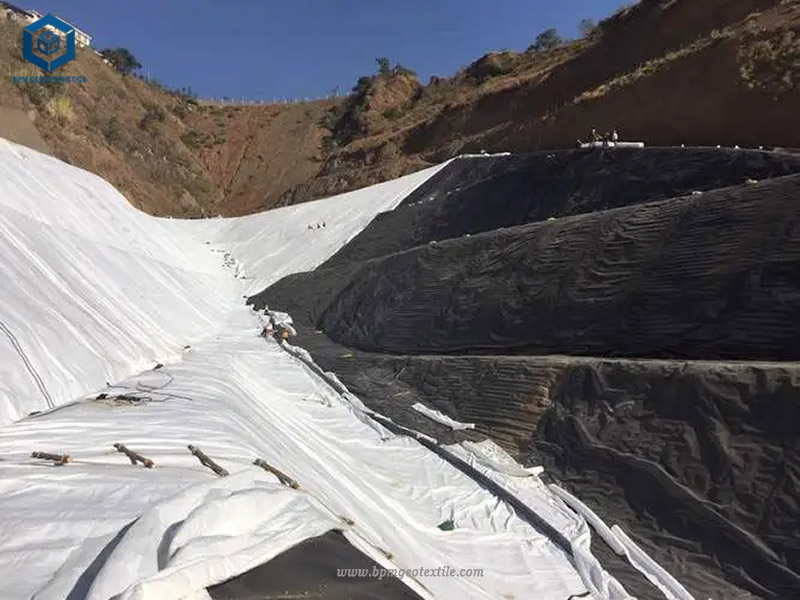
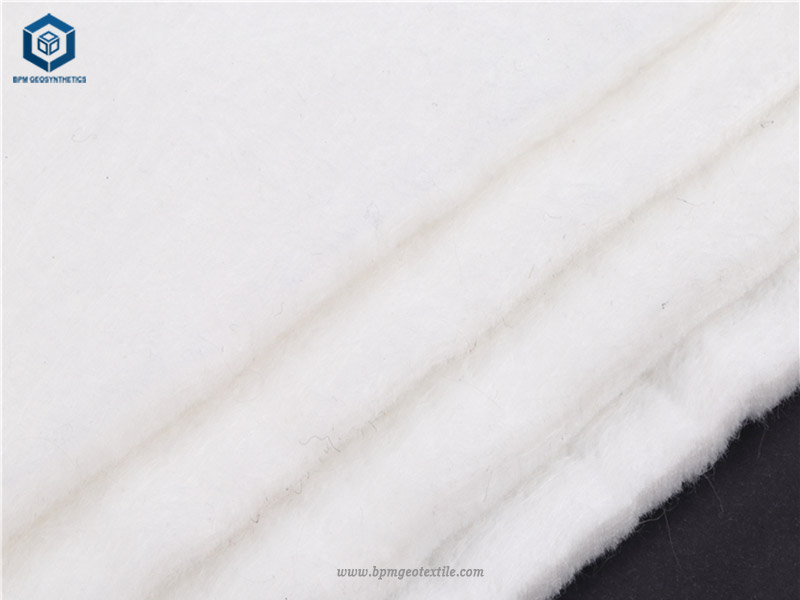
2. Filtration. Geo fabric acts as a filtration layer in landfill systems. They allow the passage of water while preventing the migration of fine particles from one layer to another. This filtration function helps to maintain the hydraulic performance of the landfill by preventing clogging and ensuring proper drainage.
3. Drainage. PP staple fiber non-woven geofabric can act as a drainage layer in landfills. They provide a pathway for the efficient flow of leachate (liquid generated from waste decomposition) within the landfill system. The geotextile’s porous structure allows water to pass through while retaining solid particles, ensuring effective leachate management.
4. Erosion Control. Geo fabric is useful for landfill slope stabilization and erosion control. Geo fabric mateial can be installed on exposed landfill slopes to prevent soil erosion caused by rainfall or surface runoff. The geotextile’s surface provides stability, reduces water velocity, and promotes vegetation growth, minimizing erosion and protecting the landfill’s integrity.
5. Protection. Geo fabric can protect geomembranes, which are impermeable liners that prevent leachate from contaminating the surrounding environment. PP staple fiber non woven geotextiles stand between the geomembranes and the soil to provide cushioning. It is useful protect the geomembrane from punctures or damage during landfill operations.
PP geo fabric plays a crucial role in landfill engineering by enhancing separation, filtration, drainage, erosion control, and protection functions. These geotextiles help improve the performance, stability, and environmental sustainability of landfill systems.
Our customer in Thailand won the bid for the landfill project. It required 400g PP staple fiber geo fabric materials. Since this project is a government project, the requirements for various indicators of materials are very strict.
We have been cooperating with this customer for 5 years. He was satisfied with the geosynthtic products during this period in terms of quality and delivery time. So the client decided to entrust this project to us.
The customer sent us the relevant project information. We decided to use PP high strength polypropylene staple fiber geo fabric to achieve this target. We sent the geo fabric technical indicators and test reports. We also sent our previous cases and other materials to customers for reference.
After discussing with his engineer, the customer thought this kind of geo fabric materials is feasible. At the same time, we also mail some samples to customers for reference. After receiving the samples, the customer conducted a test, and the test results were also up to standard.
Ultimately, the customer decides to deliver the order to us. The geo faric quantity is 200,000 square meters in total. Due to the tight project period of the customer, we shortened the delivery period to 7 days while ensuring the quality.
One month after placing the order, the customer received the goods.
Specifications of Nonwoven Geo Fabric Materials for landfill in Thailand
- PP non woven geo fabric materials weight-400gsm
- Roll size: 5.9m*50m
- Quantity: 200000sqm
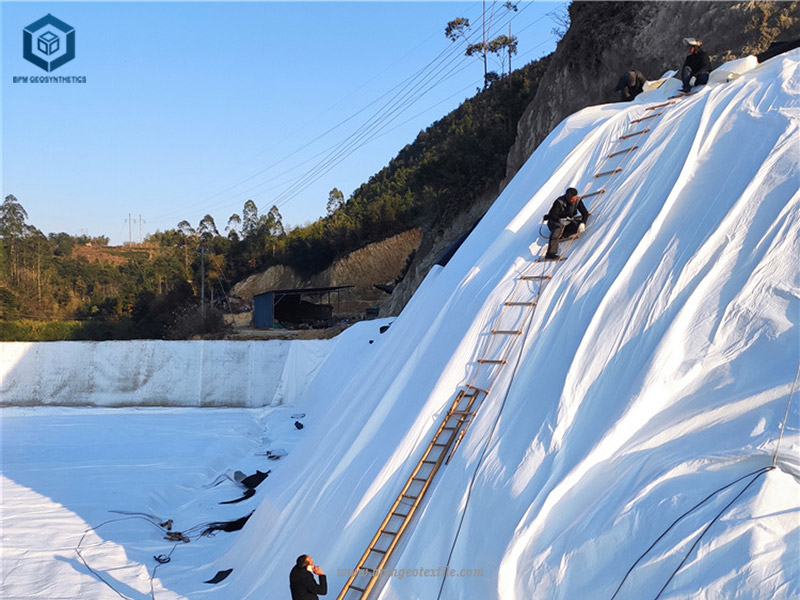
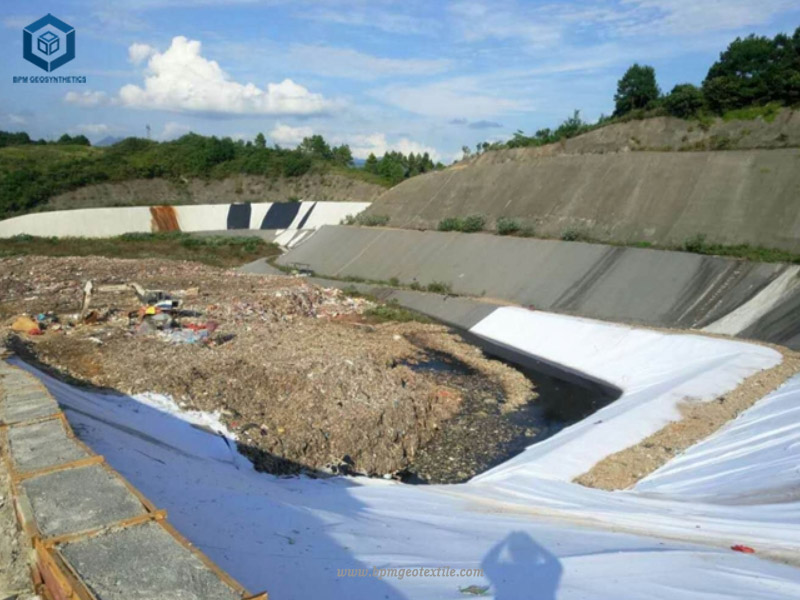
How to install geo fabric materials?
1. Clean and prepare the surface. Before installing the geo fabric, it is necessary to clean the surface and ensure that the surface is flat and free of large debris.
2. Measuring and cutting. According to the required size, measure and cut the geo fabric using appropriate tools such as scissors or blades. Make sure the geo fabric materials is cut to cover the desired area with proper overlap.
3. Install the geo fabric. Spread the geo fabric on the predetermined area. Make sure the edge of the geo fabric is aligned with the edge of the ground and there needs to be proper overlap to ensure continuity. For larger areas, heavy tools or mechanical equipment can be used to assist in laying.
4. Fixing the geo fabric materials. Fix the geo fabric materials to the ground with fixing objects such as ground nails, staples or weights. The spacing of the fixtures should be adjusted according to the specific situation and the thickness of the geo fabric to ensure that the geo fabric is firmly fixed on the ground.
5. Overlap and connection. If multiple geo fabric edges are required to be connected to each other, special connection methods such as stitching, hot melt or adhesive can be used to ensure the continuity and integrity of the connection.
6. Covering and protection. Once the geo fabric material is installed, it can be covered with other materials such as soil or gravel to provide additional protection and stability.
About BPM
BPM manufactures and wholesales many types of effective and states of the art geotextile, geomembrane, and other geosynthetics to over 36 countries. BPM geosynthetic products are widely used across a variety of industries including waste containment, water containment, aquaculture, industrial project, energy project and mining projects, etc. BPM main customers are from Australia, France, Sweden, UK, Hungary, New Zealand, Poland, Mexico, Ecuador, Brazil, Pakistan, Bangladesh, Thailand, Vietnam, Malaysia, Indonesia, Singapore, Philippines, Sri Lanka, India, UAE, Saudi Arabia, Qatar, Kenya, etc.
BPM is not only manufacturing best quality geosynthetic products but also providing professional design and installation service. OEM, ODM, custom development and fabrication are also available. If you have any questions or inquiries, please fill and submit the following form, we will reply as soon as possible.

